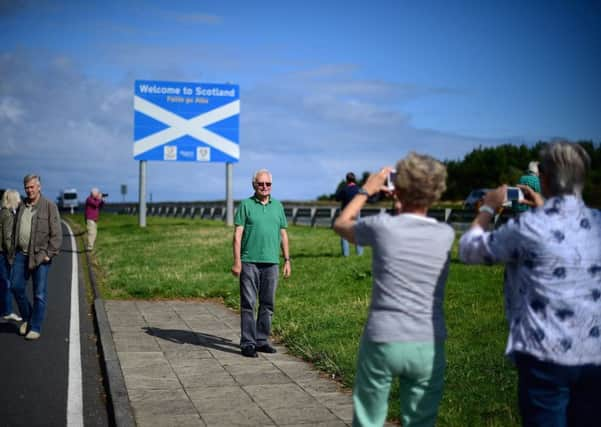Brian Ferguson: Tourists numbers rising so why the office closures?


But that is what VisitScotland achieved when it announced the closure of more than half of its tourist offices on the same day it reported soaring numbers of overseas visitors were flocking to Scotland.
A 10 per cent rise in the number of foreign tourists in the 12 months to the end of June was more than matched by a 19 per cent increase in spending. With figures for the peak July and August months still to come, the number of overseas visitors rose by more than 21 per cent in the second quarter. Spending was up 41 per cent.
Advertisement
Hide AdAdvertisement
Hide AdIt is against this booming backdrop that VisitScotland chose to reveal that 39 of its 65 tourist information centres would be closing in the next two years.
Some of these are in the heart of some of the most scenic parts of the country, including Drumnadrochit, Braemar, Dunkeld, Fort Augustus, Blairgowrie and Inverary.
Others are in far-flung and remote locations like Lochinver, Durness, Barra, North Uist, Stranraer, Thurso, Campbelltown and Stromness in Orkney. Airports in Edinburgh, Glasgow and the Shetland Isles will also be affected.
No part of the country seems to have escaped the cull, which has been blamed on dwindling “footfall” at these sites and a growing reliance on using smartphones. If the industry, which is worth around £11 billion to the economy each year and supports 217,000 jobs, cannot keep pace with the latest digital technology it risks falling way behind its rivals.
VisitScotland’s announcement was made just days after the agency admitted the industry needed a “sensitive touch” if it was to remain sustainable in future.
It has announced a rethink of promotional activity in order to tackle problems with “pressure points,” most notably across the North Coast 500 route and on the Isle of Skye, which have clearly struggled with growing numbers of first-time visitors unable to find accommodation.
It has pledged to focus more on persuading tourists to head off the regular beaten path and discover “lesser known parts of Scotland.”
But areas that, in theory, could benefit heavily from this strategy, such as the north-east, Argyll, Perthshire and the Outer Hebrides are due to be badly affected by the closures in the next two years. Crucially, many of these areas have either poor or non-existent mobile phone signal.
Advertisement
Hide AdAdvertisement
Hide AdOnly this weekend, the main industry body, the Scottish Tourism Alliance, was warning that the “significant shortfall” in coverage is one of the industry’s key challenges at preset.
Earlier this month, the STA published a new survey which revealed that more than a quarter of Scotland’s tourism business expected their profits to slide in the next three years.
Its chief executive Marc Crothall says the industry is facing a “perfect storm” due to uncertainty over the impact of Brexit, the prospect of another independence referendum, soaring costs and a perceived lack of government support.
Owners of businesses in remote parts of the country more reliant on tourism than any other industry may have good reason to wonder if the actions of the national tourism agency will help them weather the gathering storm or make conditions even tougher.